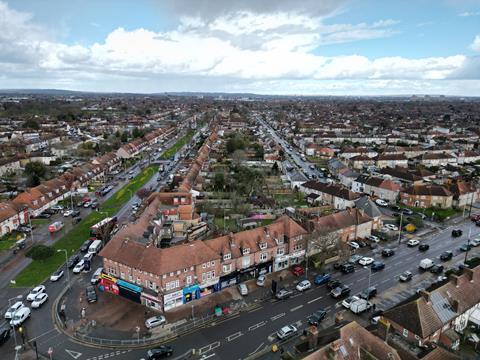Comprehensive guidance aims to simplify the design coding process for local authorities

The Design Council has launched a set of new resources aimed at supporting local authorities in England with the development of design codes. These materials, which are available for free download, provide comprehensive guidance to assist councils in creating and implementing design codes that reflect local character, encourage community engagement, and align with government priorities such as housing development and economic growth.
“The Government wants to see high-quality, well-designed and sustainable homes and places brought forward,” said Joanna Averley, chief planner at the Ministry of Housing, Communities & Local Government. “We believe that design codes, as well as up-to-date local plans, masterplans and other design guides, will play an important role in delivering this, enabling local areas to establish a shared vision for change and clearly set out what high-quality and good design means for them.
“We’re incredibly grateful to the pathfinders for all their efforts as part of the programme. Sharing their experiences will ensure other areas are in the best possible position to prepare and implement their own local design codes and make their visions a reality.”
Design codes are intended to be instrumental in shaping places that resonate with local needs and character. They are also supposed to provide greater clarity around planning, supporting broader government objectives, including increasing the supply of housing and fostering economic development.

Edward Hobson, Director of Partnerships at the Design Council, explained: “Design codes are a critical tool to achieve the new government’s manifesto pledge to create 1.5 million ‘high-quality, well-designed and sustainable homes and places that increase climate resilience and promote nature recovery’.
“Used well, design codes can increase the quality of proposals being bought forward to planning, helping local authorities meet their housing targets while supporting vibrant, healthy communities. And, by moving community engagement upstream in the development process, they give local people a genuine stake in shaping how new homes and development add to their locality.”
He added: “The Pathfinder Programme has highlighted the challenges faced by local authorities in creating design codes, so our new learning materials help make the process as easy, effective and relatable as possible for planning teams. As the UK’s National Strategic Advisor on design, the Design Council is committed to supporting local and national government to solve the challenge of creating the homes the UK needs within the country’s climate commitments.”
>> Also read: Design codes: What they are and how to create them
The newly introduced resources have been developed by the Design Council as part of the Design Codes Pathfinder Programme, an initiative led by the Ministry of Housing, Communities & Local Government. This programme is assisting 25 organisations in producing local design codes that align with the Government’s National Model Design Code.
The Design Council is responsible for overseeing the programme, with a focus on monitoring and evaluating the experiences of the participating pathfinders in producing design codes, as well as identifying the support required for successful implementation.

Pathfinder Programme participant Amandeep Singh Kalra, associate director at Be First, the London Borough of Barking and Dagenham regeneration company, said: “The starting point for our design code was sustainability as we worked on a retrofit-led initiative for the Becontree Estate, which comprises 40% of our borough. As 80% of the houses that will be here in 2050 are already built, it’s important to incentivise and enable their decarbonisation.
“Our design code reflects this and could easily be replicated and adapted by other boroughs with an inter-war garden city. There’s really no need for every council to start from scratch. Sharing our knowledge and experience accelerates the process which is essential to ensure we all meet our 2050 net zero targets.”
>> Also read: Will design codes help unlock the planning system?
The key topics covered in the new materials include:
- Laying the Groundwork: Ensuring effective design code implementation.
- From Planning to Execution: Achieving resource efficiencies.
- Bridging Siloed Working: The importance of collaboration in design code development.
- From Policy to Practice: The role of development management officers.
The resources can be accessed online here.
















No comments yet